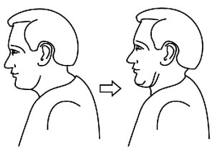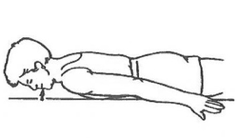ADVICE
Neck and Shoulder Pain
Many of my clients come to see me because of chronic neck and shoulder pain; almost without exception they exhibit forward head posture, or “text neck” as it is sometimes known.
“Text neck” is a hazard of life in the 21st century with so many of us spending long periods of time gazing down at our smartphones, on top of time spent driving or working at a desk, which also encourage a forward head posture.
The ideal position of the head is to have the ears in line with the shoulders – few adults exhibit this, but they did once – just look at the posture of young children.
To find out if you have neutral head posture stand with your back against a wall with your heels, bottom and shoulder blades touching the wall. Does your head naturally touch the wall as well? It should do. If it doesn’t, why should you care?
An average adult human head weighs about 5kg. A 15-degree tilt forwards from the neutral position is equivalent to another 7 kg of weight that the muscles of the posterior neck must support. A 30-degree tilt will add 13kg and so on. It’s no wonder that so many of us are suffering from chronic neck pain.
Research by the journal Ergonomics has shown that texting on a smartphone produces a more extreme downward angle of the head than watching a video or browsing the web. Texting whilst sitting was shown to be even worse than whilst standing. So, one simple habit to break is not to look down at your phone for long periods, try holding it at eye level instead and take frequent breaks.
Other easy actions to improve posture include: –
Whilst driving, think about tucking your chin so your head rests against the head rest, but take care not to tilt the head upwards as you do so.
Check the ergonomics of your work station.
Here are some simple but effective exercises you can perform daily that will help encourage a neutral head posture: –
- Chin tuck: Whilst sitting upright, gently tuck your chin in to make a double chin, avoiding moving your head up or down. Aim to feel a gentle lengthening sensation at the back of your neck. Hold this for 5 seconds and repeat up to 30 times.

- Chin tuck against gravity: Whilst lying on your stomach on a bed with your head off the edge of the bed, gently tuck your chin in as described before. Hold for 5 seconds and repeat up to 30 times.
If your neck and shoulder pain becomes debilitating, massage can help ease the symptoms, but only by changing our habits can we prevent the problem from becoming chronic.
The effects of having rounded shoulders, which frequently accompany forward head posture are looked at in another article to be added soon.

